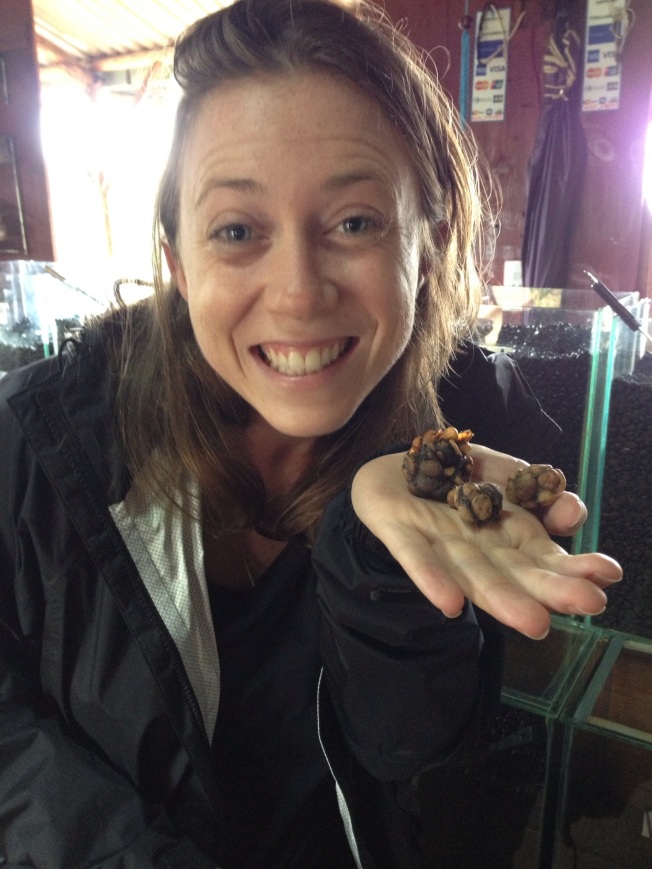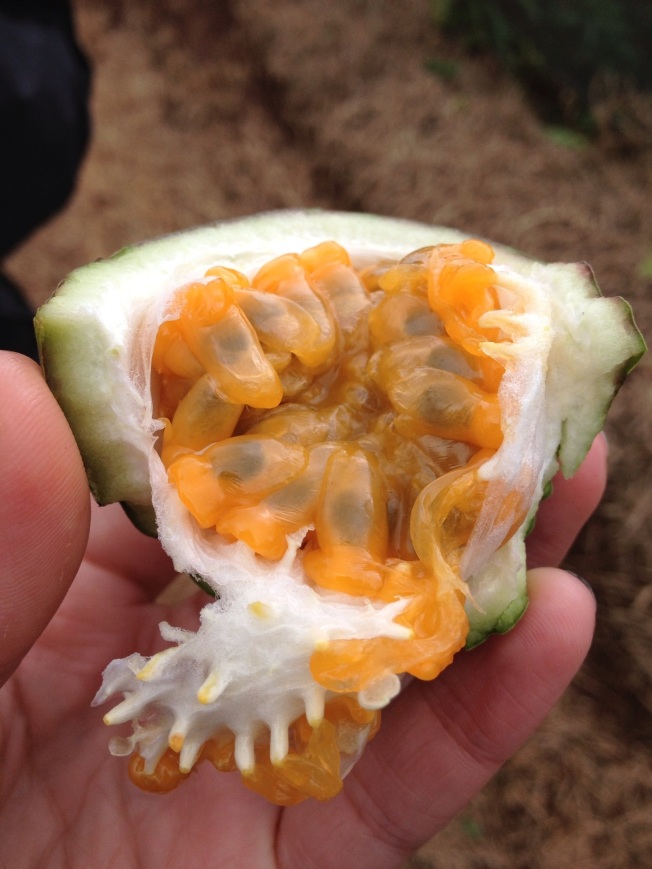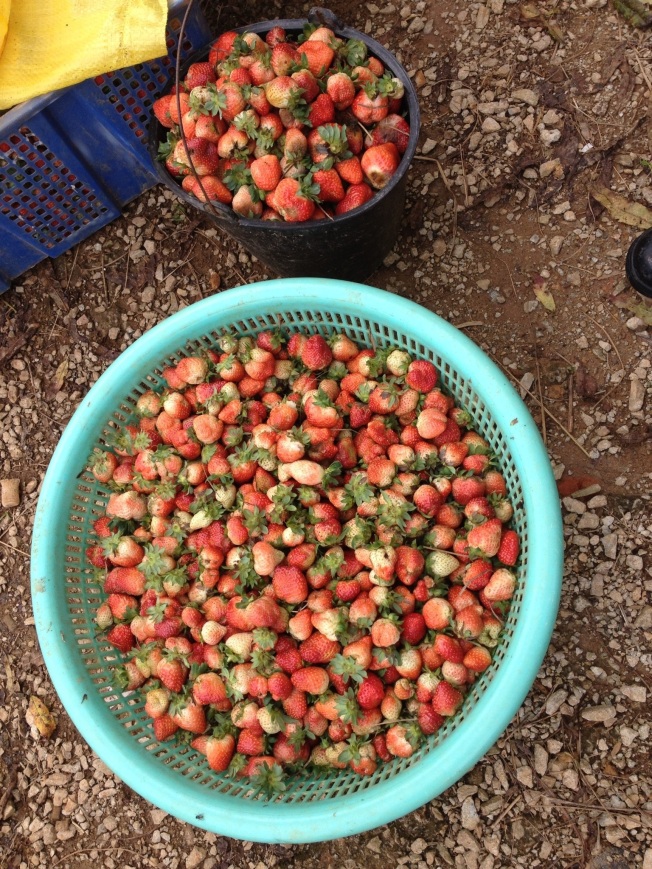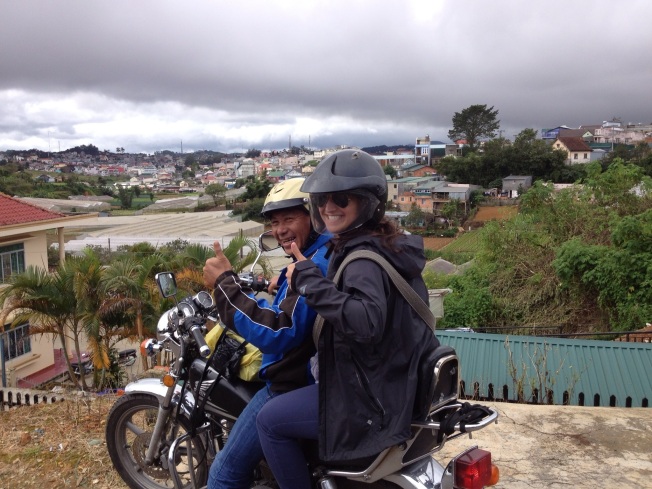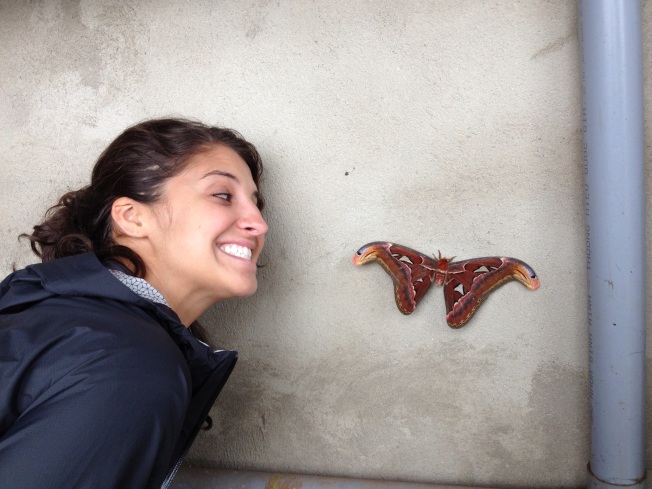We came here searching for it – the strange and unfamiliar; the food that would confuse our senses, feel dangerous, and leave us wanting more. We had heard about the still beating snake heart shooters in Hanoi, but so far, nothing so adventurous had crossed our paths. In the South Central Highland city of Da Lat, or luck began to change (or run out, depending on how you look at it).
The grandmotherly Mrs. Dung from Dreams Hotel (rave review to come) organized our tour with the original Da Lat Easy Rider Group . Our guides, Quy and Duc, spent 20 years as Easy Riders and treated us as friends they were sharing their hometown with. To avoid the many tourist traps of Vietnam, it is important to look for the small, locally run operations that will be sure to deliver an authentic, personalized tour. Quy and Duc took turns introducing us to local farms, plantations, shops and roadside eats/hangouts located throughout the hillside. The men would teach us about the places we were seeing, then give us the freedom to explore on our own, so each new experience was completely individualized.
As we weaved through traffic, out of the city and high up into the mountains, a light rain descended. In the exhilaration of the morning’s ride, I had nearly forgotten our real goal for the day was to meet the hillside minority groups. Our first stop at the local farms revealed transcendent views of the city. We met families of farmers who let us picked passion fruit and strawberries, warm from the sun, which we ate despite the doctor’s warnings. Throughout the day, we met so many lovely people whose struggles did not deter them from sincere kindness.
It was at the coffee plantation, though, where we got our first real taste of the exotic. Duc showed us the growing moka bean plants and educated us on Vietnam’s most expensive caffeinated delicacy – Weasel Coffee. Weasel coffee, made from a variety of beans grown in Vietnam, is all produced using the furry, beady eyed creatures we met caged alongside the fields. This wild specie of weasels, Asian Palm Civet, love to eat the coffee fruits but cannot digest the actual bean. In the 1800s, farmers began to collect the droppings and salvage the beans, eventually caging and feeding the animals to industrialize the process. Only the female civet is used, as they give off a special, delicate aroma that attaches to the beans during digestion. Though a rigorous washing process is a necessity, the casing surrounding the bean is never completely digested by the animal, so the actual bean does not come in contact with much bacteria. Have I made your mouth water yet?! While poop coffee certainly does not sound appealing, there is a reason it is the most expensive in Vietnam ($18 USD for 100 grams-less than a pound!). Julia and I both agreed it was the best cup of coffee we’ve ever tasted; it was served black and strong, but with none of the buttery taste present in most Vietnamese coffee. The moka bean added a unique richness and smoothness. We couldn’t resist buying some fresh beans as a gift for future unsuspecting tasters.
Later, we held silk worms and watched the larvae be boiled out of cocoon’s, later battered and fried as a delicacy. To read more on my motorbike trip around Da Lat, check out this week’s Gold Coast Gazette!
